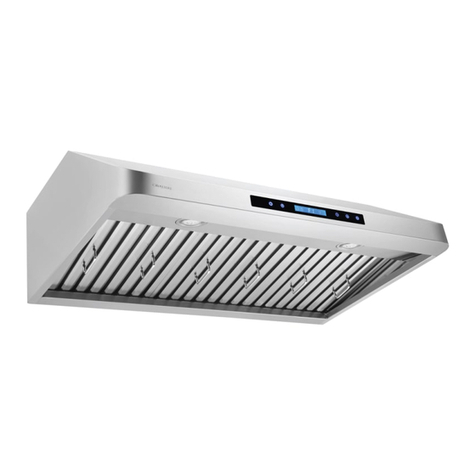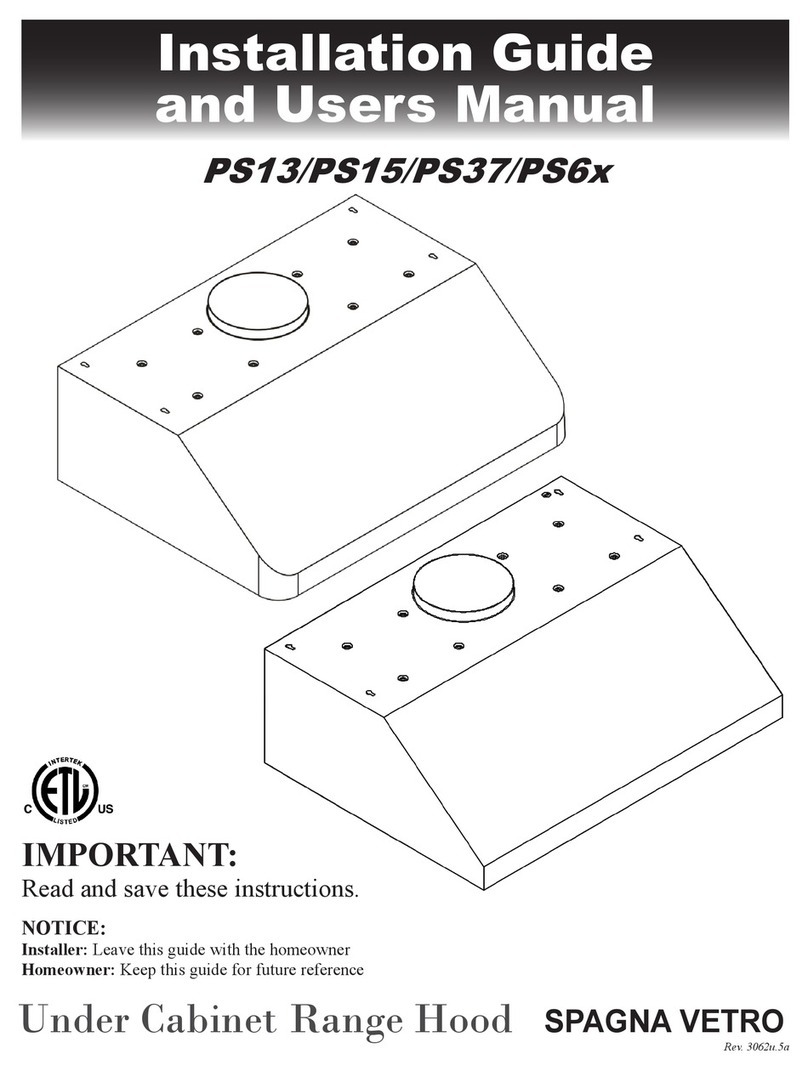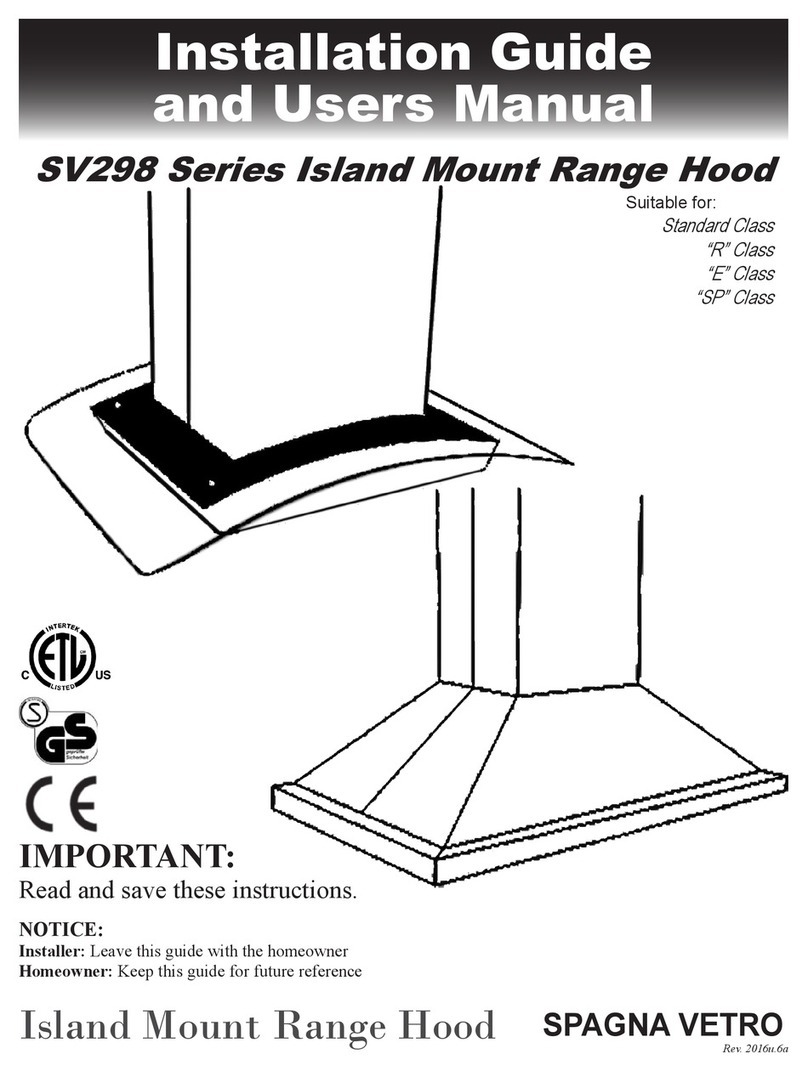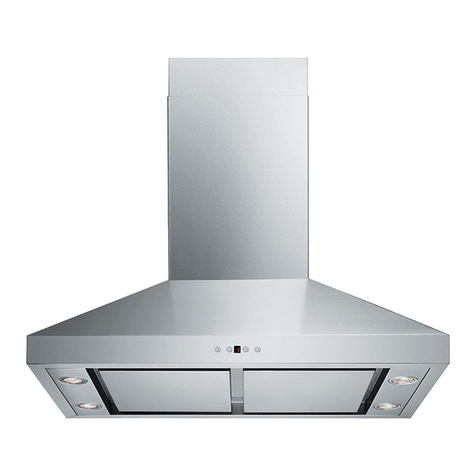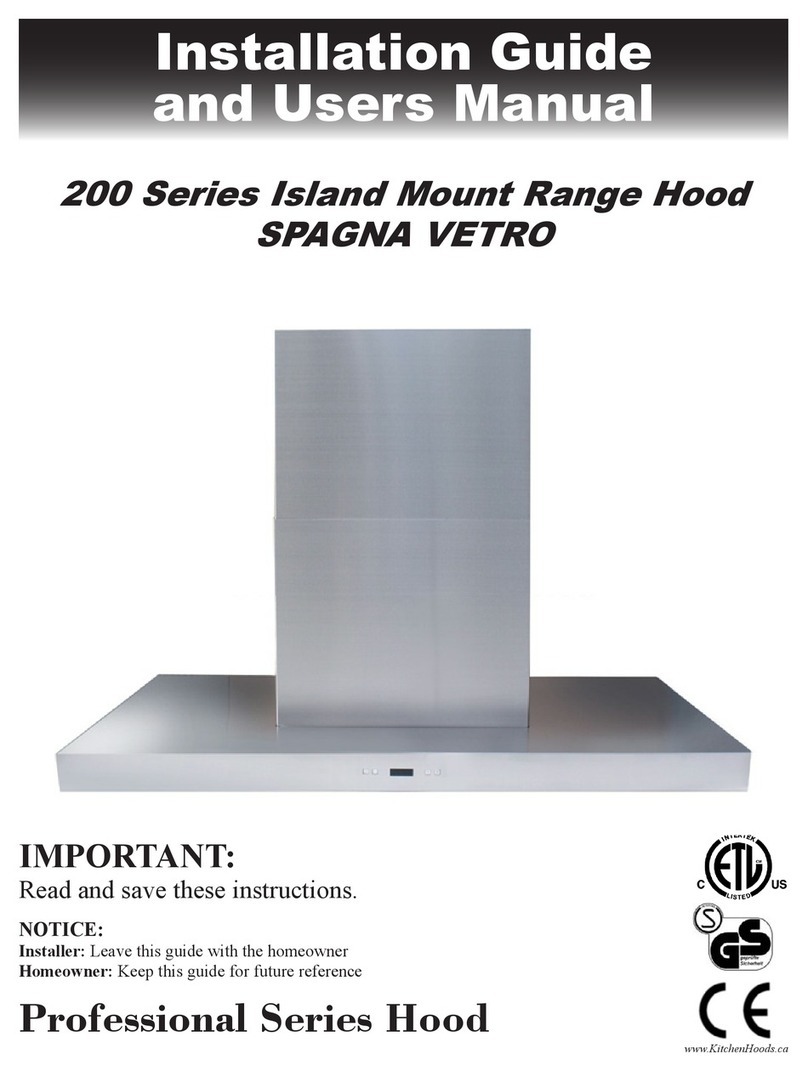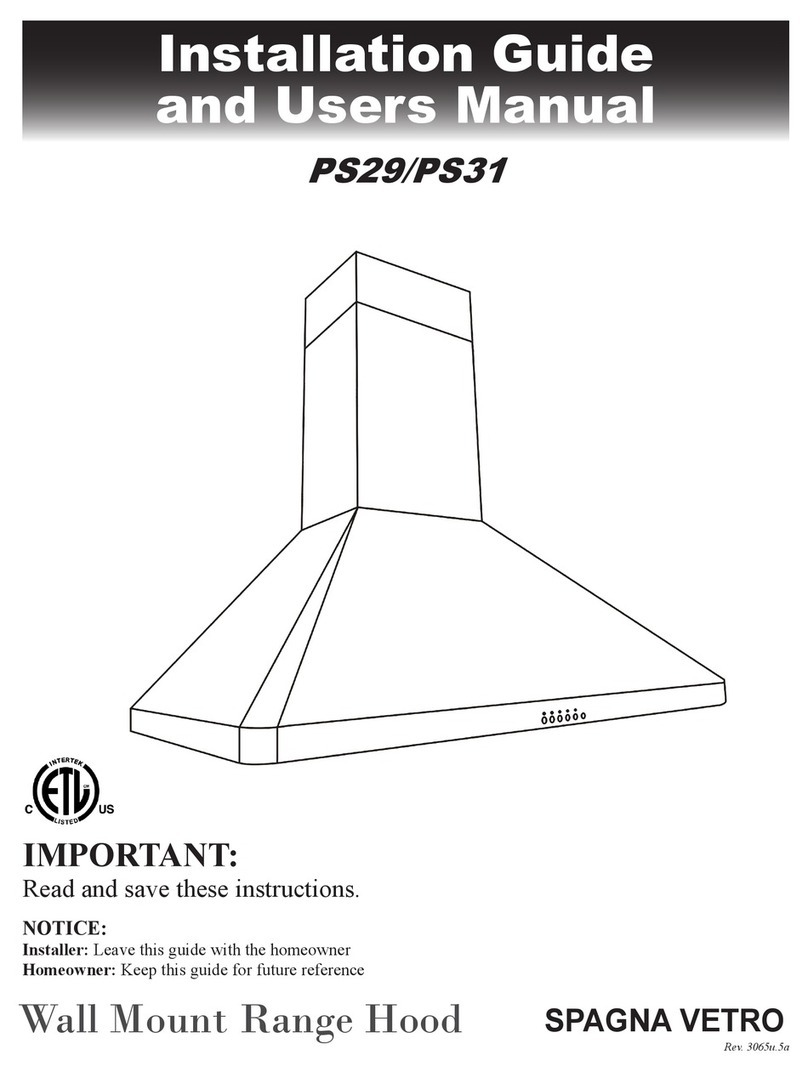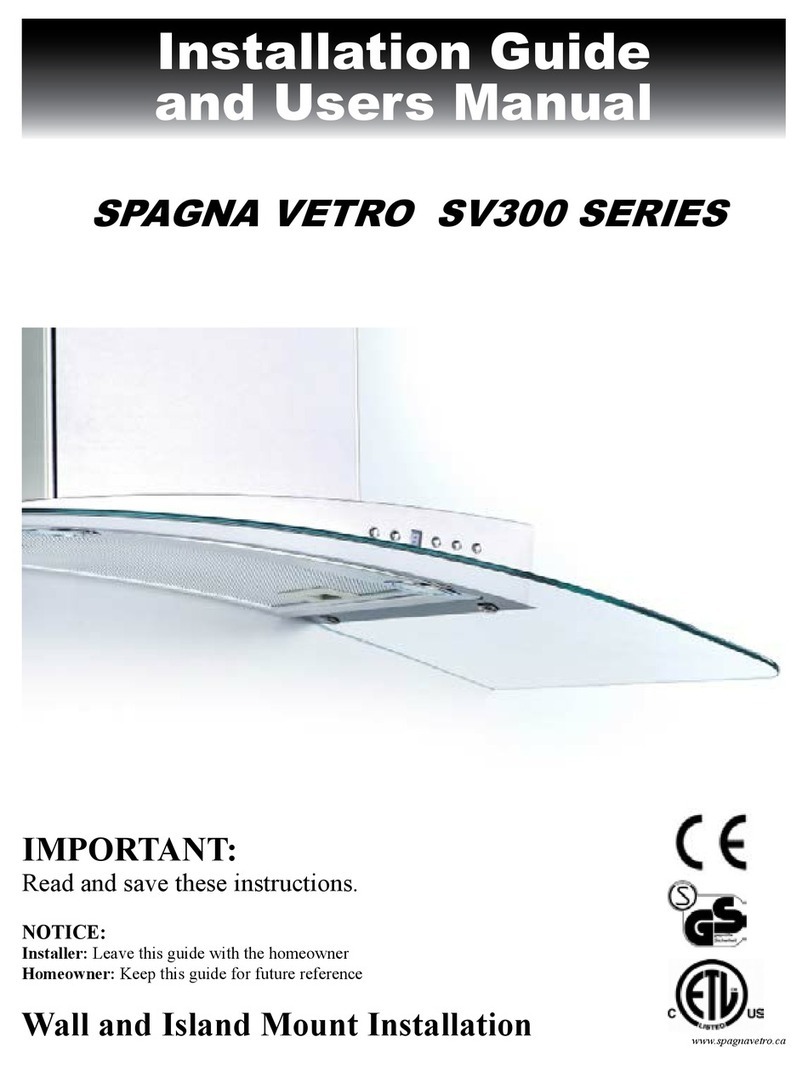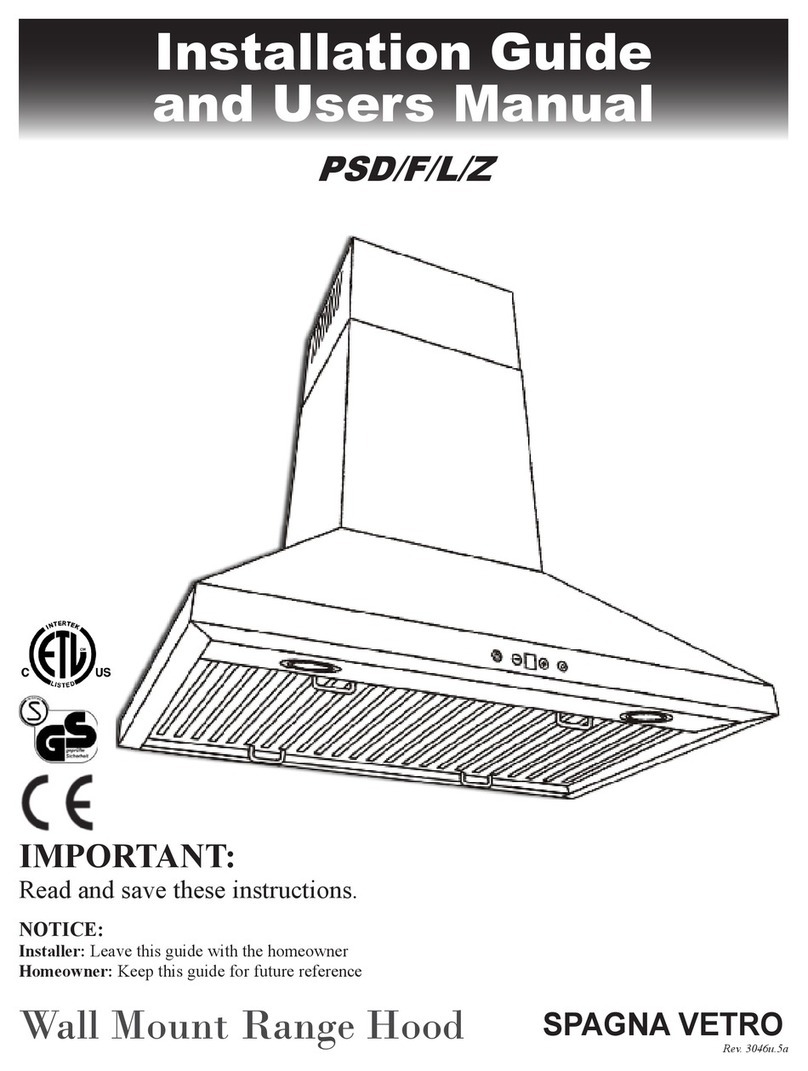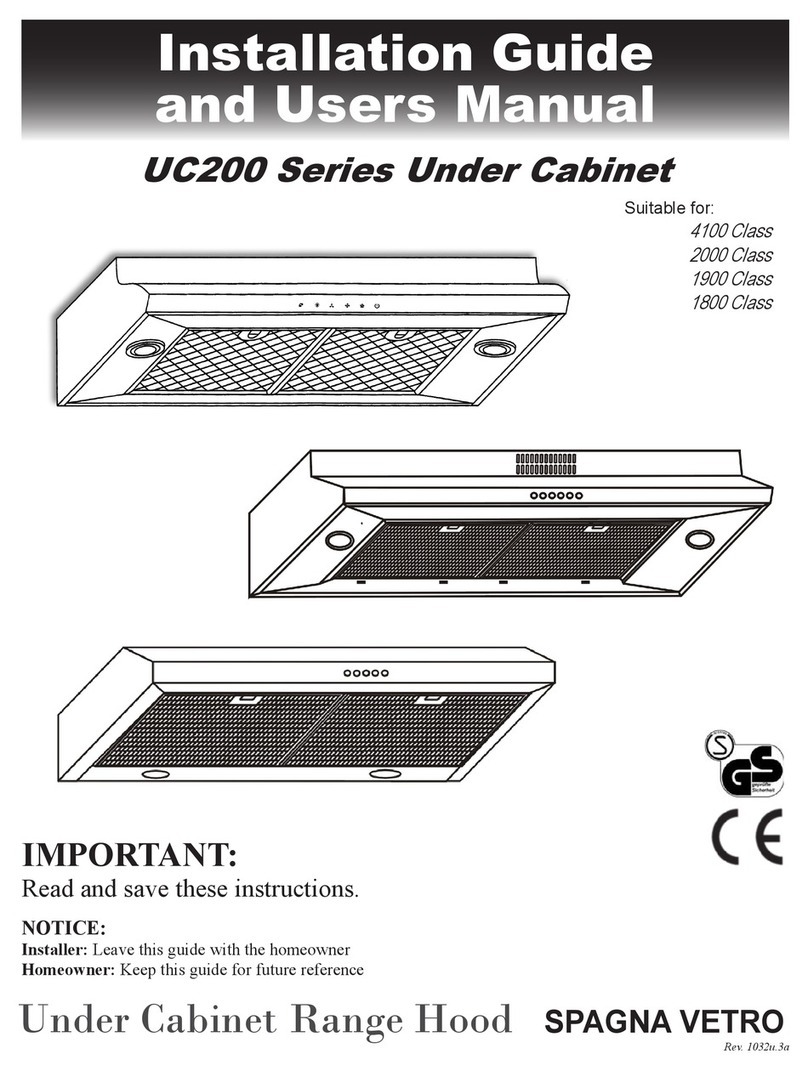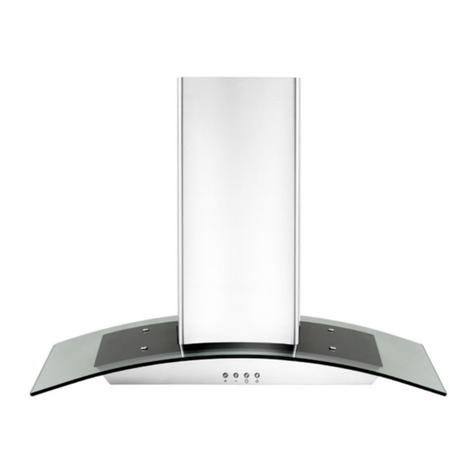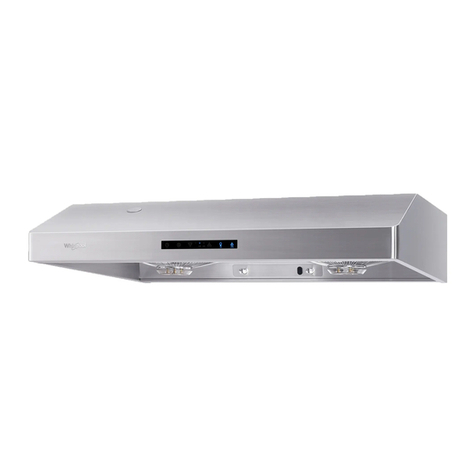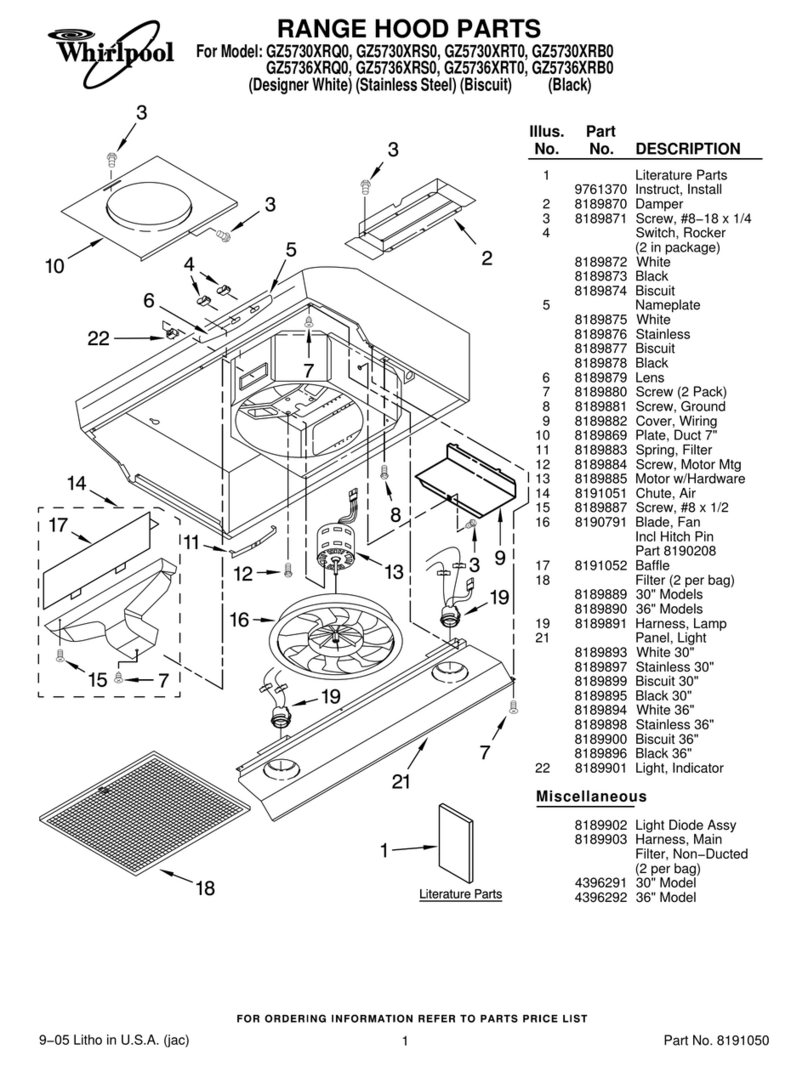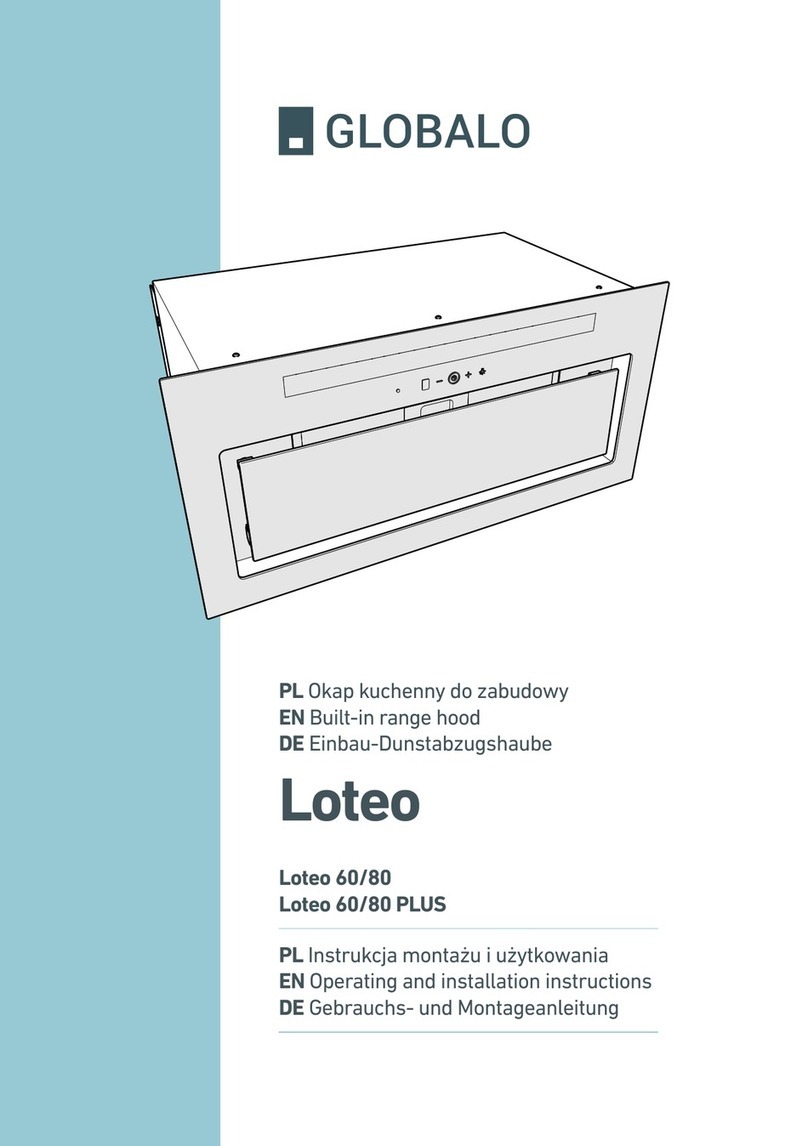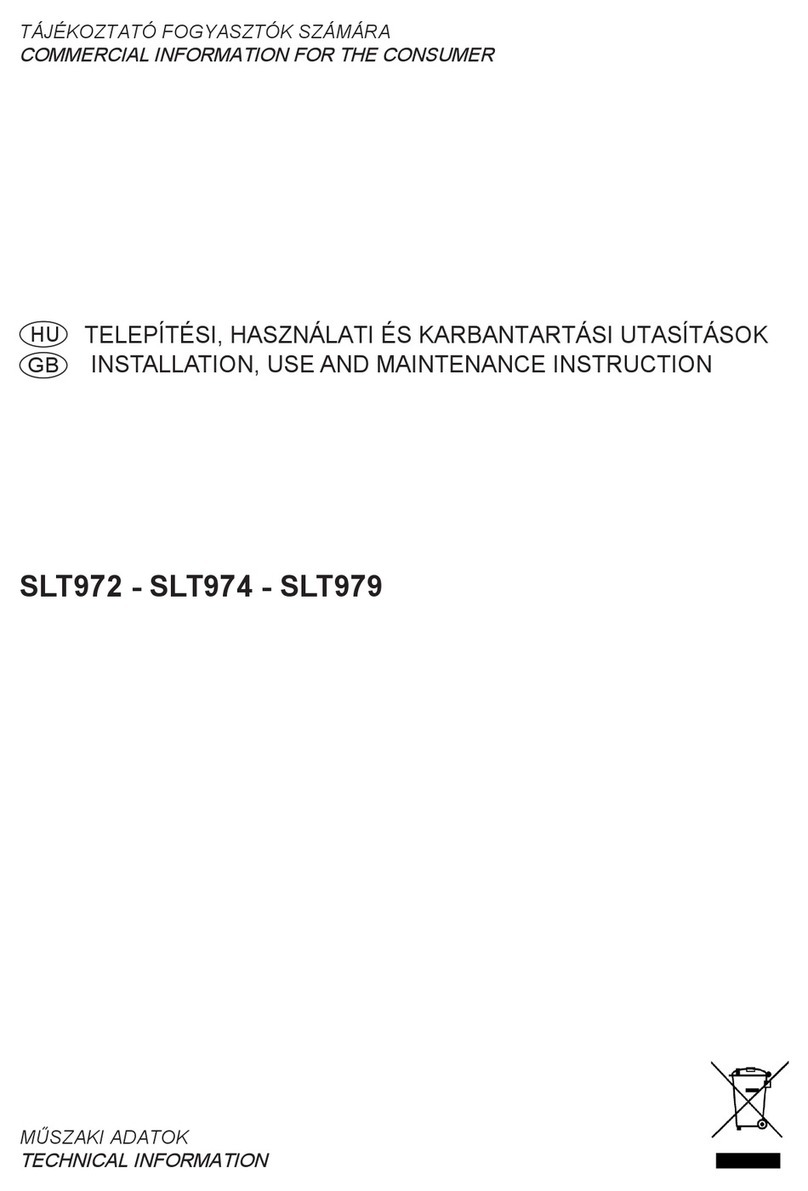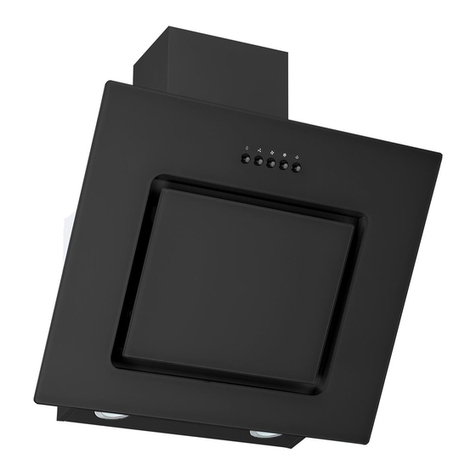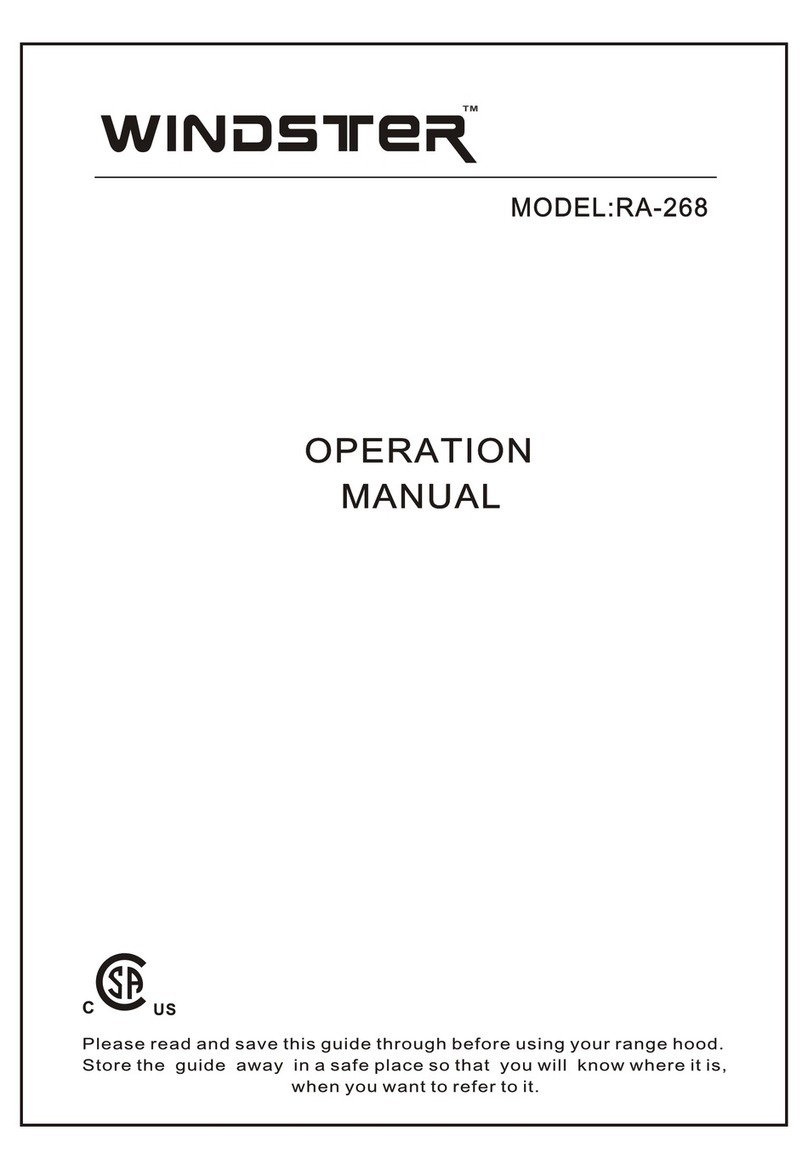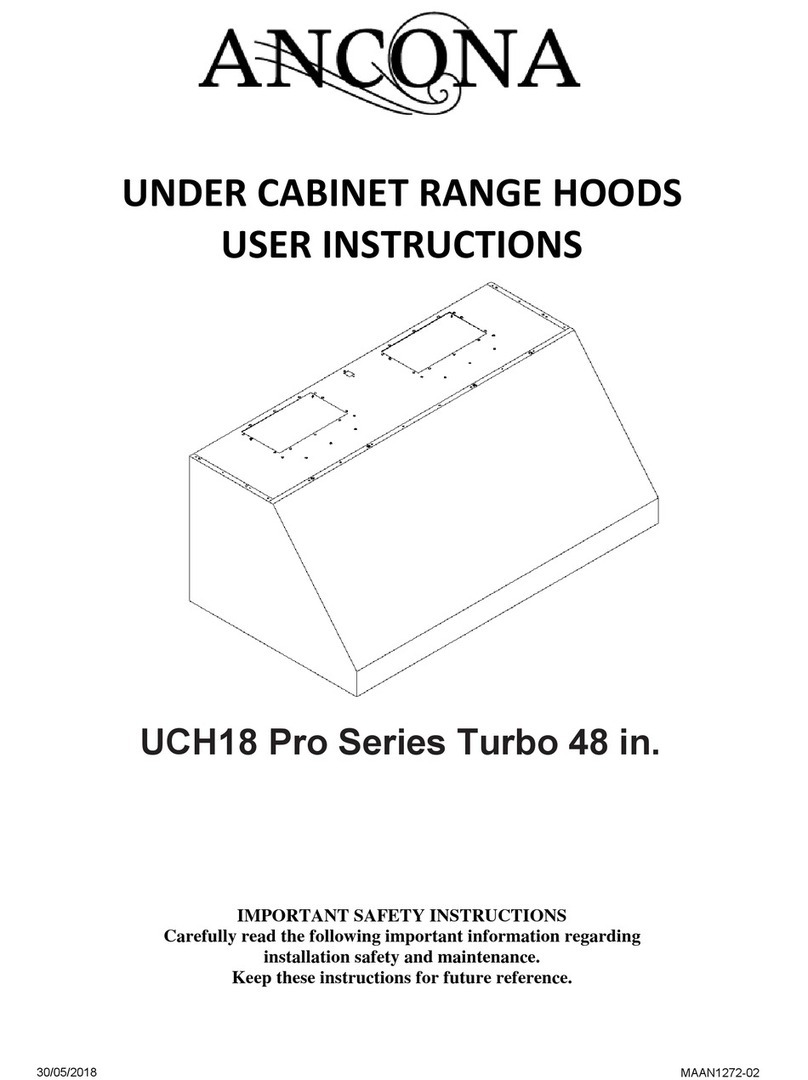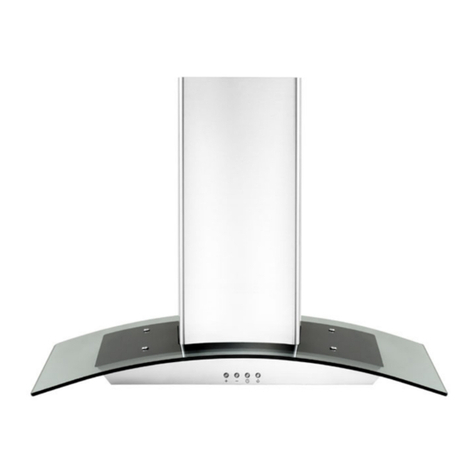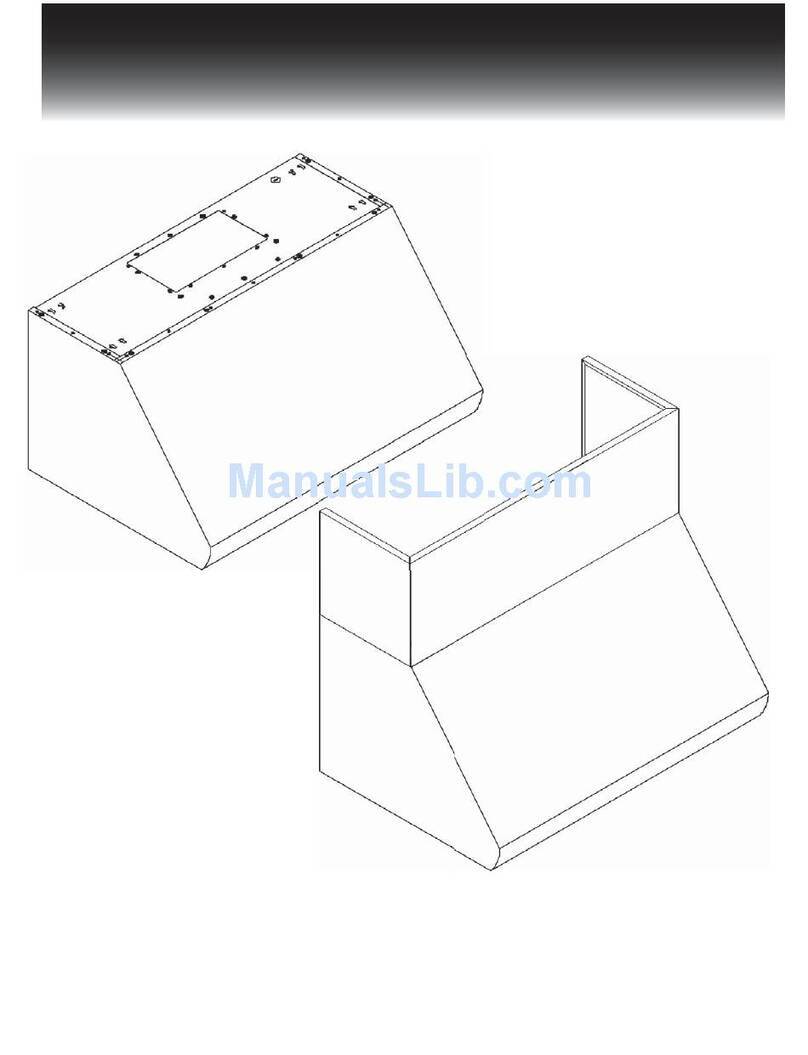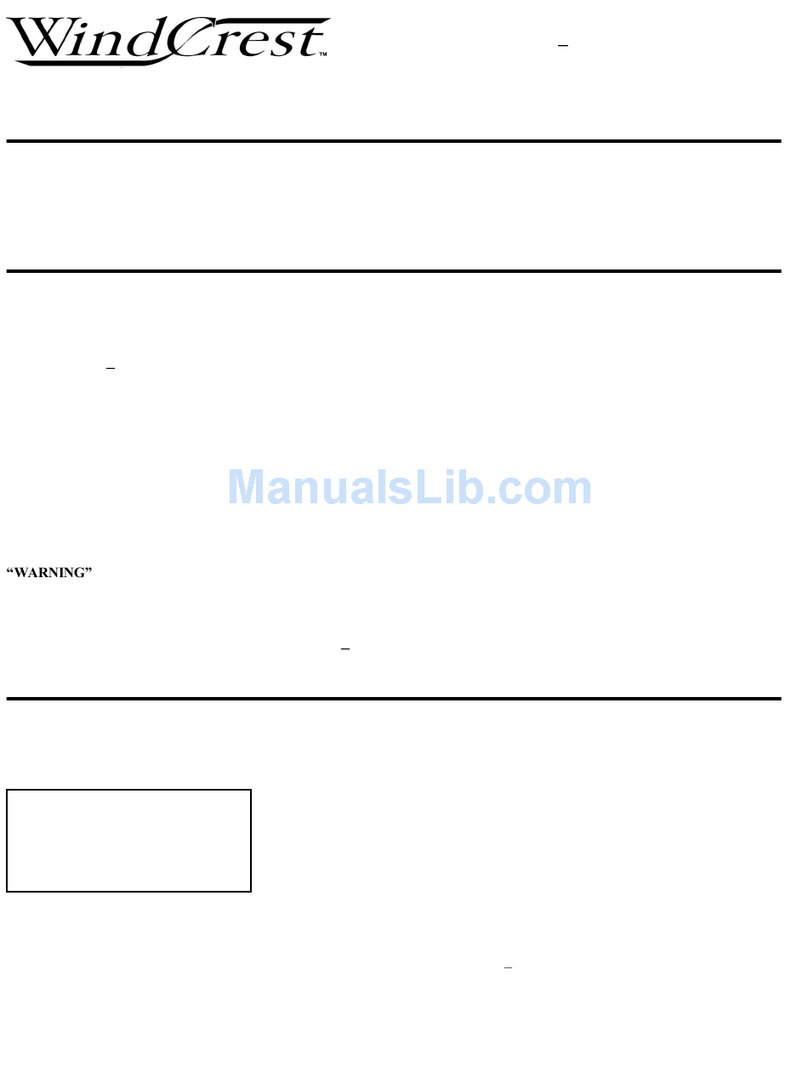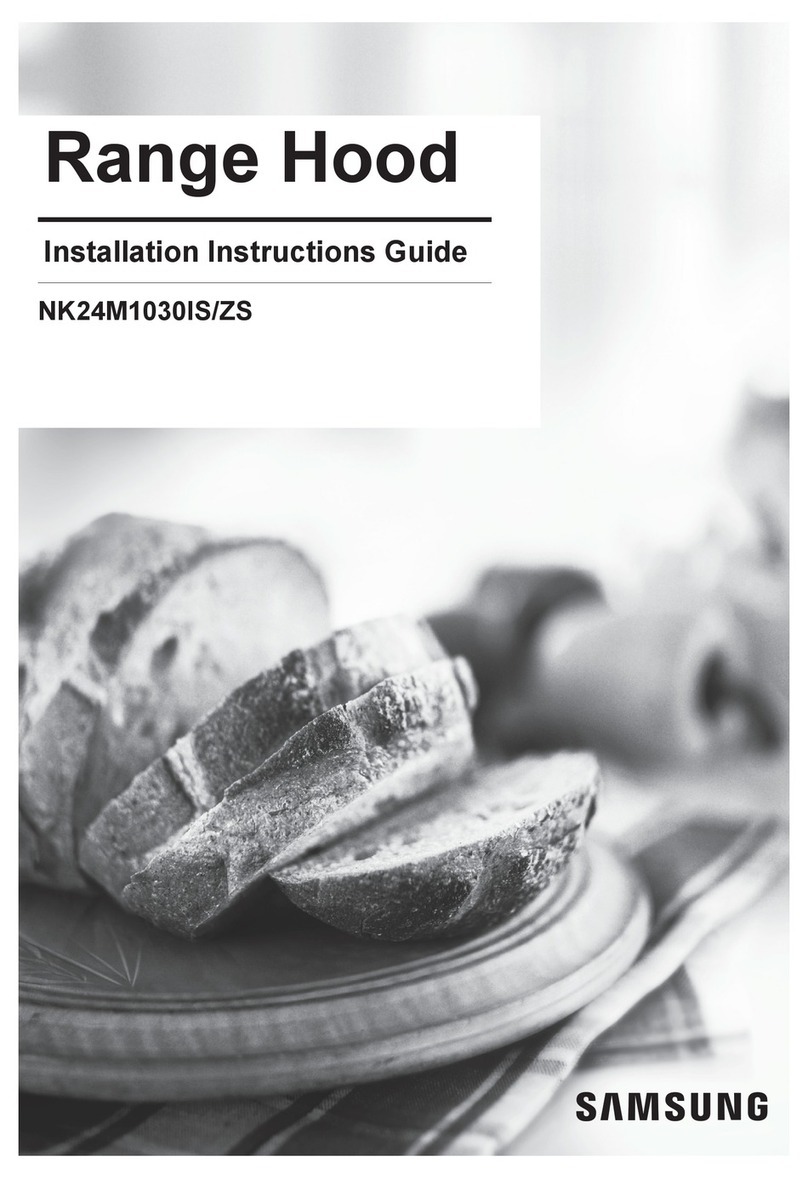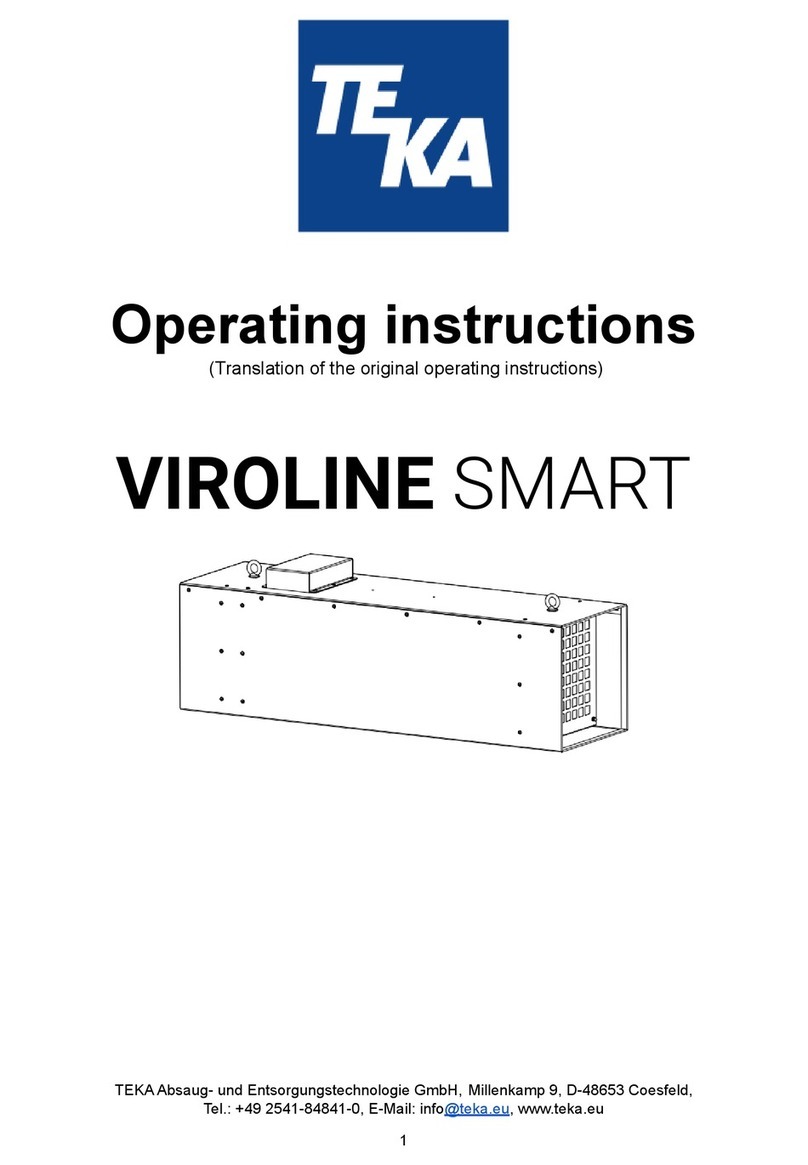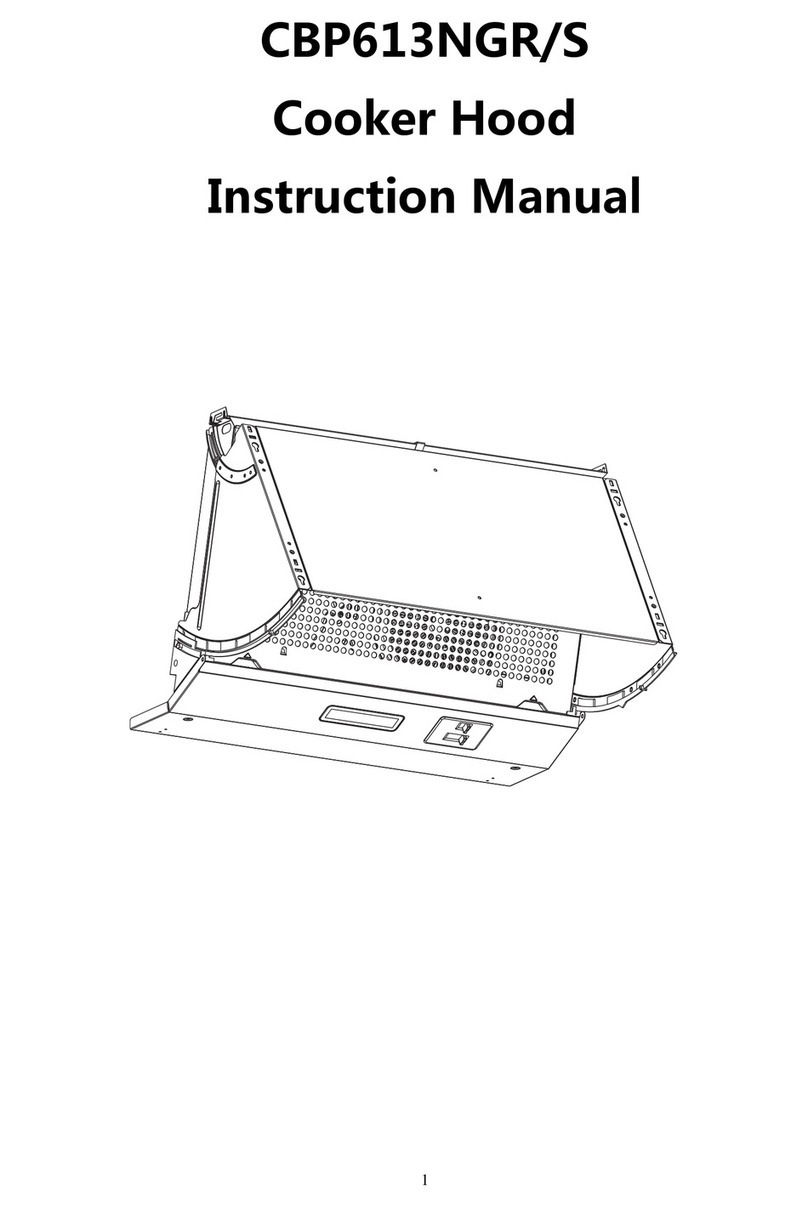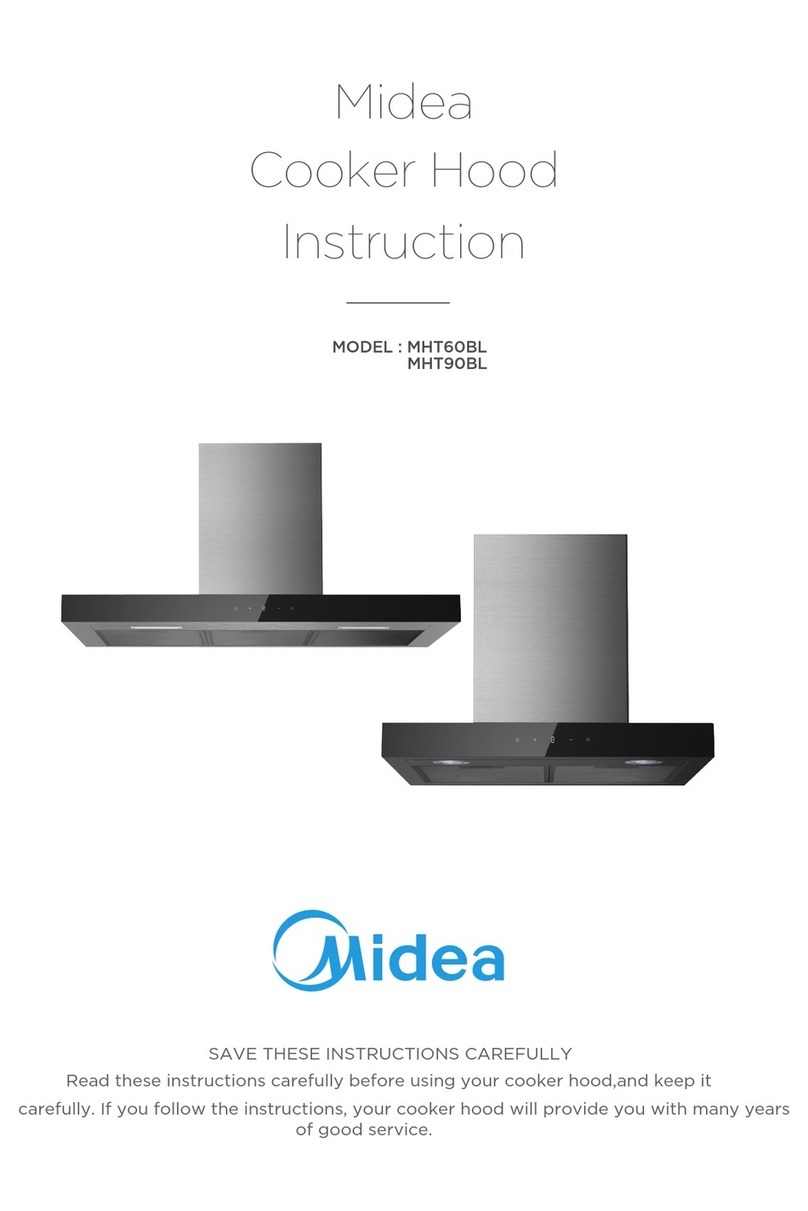
IMPORTANT:Observeallgoverningcodesandordinances.
It is the customer’s responsibility:
• Tocontactaqualiedelectricalinstaller.
• ToassurethattheelectricalinstallationisadequateandinconformancewithNationalElectricalCode,ANSI/
NFPA70—latestedition*,orCSAStandardsC22.1-94,CanadianElectricalCode,Part1andC22.2No.
0-M91-latestedition**andalllocalcodesandordinances.
Ifcodespermitandaseparategroundwireisused,itisrecommendedthataqualiedelectriciandeterminethat
the ground path is adequate.
A120-Volt,60Hz,AC-only,fusedelectricalsupplyisrequiredonaseparate15-ampcircuit,fusedonbothsides
of the line.
DO NOT ground to a gas pipe.
Checkwithaqualiedelectricianifyouarenotsurethattherangehoodisproperlygrounded.
DO NOT have a fuse in the neutral or ground circuit.
IMPORTANT:SavethisInstallationGuideforelectricalinspector’suse.
Therangehoodmustbeconnectedwithcopperwire/plugonly.
Therangehoodshouldbeconnecteddirectlytothefuseddisconnect(orcircuitbreaker)boxthroughexible
armoredornon-metallicsheathedcoppercable.AU.L.-orC.S.A.-listedstrainreliefmustbeprovidedateach
endofthepowersupplycable.
Wiresizes (copperwireonly)and connections mustconformwiththerating of theapplianceasspecied on
the model/serial rating label. Wire sizes must conform to the requirements of the National Electrical Code
ANSI/NFPA 70 — latest edition*, or CSA Standards C22. 1-94, Canadian Electrical Code Part 1 and C22.
2 No. 0-M91 - latest edition** and all local codes and ordinances.A U.L. - or C.S.A. - listed conduit con-
nector must be provided at each end of the power supply cable (at the range hood and at the junction box).
Copiesofthestandardslistedmaybeobtainedfrom:
*NationalFireProtectionAssociation
BatterymarchPark
Quincy,Massachusetts02269
** CSAInternational
8501EastPleasantValleyRoad
Cleveland,Ohio44131-5575
Page9Page8
Electrical Requirements
Figure1 Figure2
Preparation
Advanced Preparations:
• Befamiliarwiththecontrolsoftherangehoodbyreading
through Range Hood Operations,Page12-13.
• Placetherangehoodonaat,stablesurface.Connectthe
rangehoodtoadesignatedstandardoutlet(pleasereferthe
productlabelforthesuitablevoltageofthisunit)andturnon
therangehood.Verifyalloperations of the range hood by
referring to Range Hood Operations, Page12-13.
• Placeallsuppliedpartsandrequiredhardwareonaat,stablesurfaceandver-
ifytheexistenceofallsuppliedpartslistedonPage4.
• Carefullyremovethewhiteplasticprotectivecoatfromtherangehood.
Preparations:
NOTE: To avoid damage to your hood, prevent debris from entering the vent opening.
• Decide the location of the venting pipe from the hood to the outside. Refer to Venting MethodsonPage7.
• Astraight,shortventrunwillallowthehoodtoperformmoreefciently.
• Trytoavoidasmanytransitions,elbows,andlongrunaspossible.Thismayreducetheperformanceofthe
hood.
• IMPORTANT:Peelwhiteplasticprotectivecoatoffthehood,ifany.
• Usesilvertapeorducttapetosealjointsbetweenpipesections.
• Forinstallingunderthecabinetwithrecessedbottom,attach4-inchwidewoodllerstrips(notprovided)on
eachside.RefertoFigure1.
• Using references in Measurements and DiagramsonPage17-18,createaccessopeningforelectricalwires
andhoodexhaustunderthecabinet.
CAUTION: If moving the cooking range is necessary to install the hood, turn OFF the power on an elec-
tric range at the main electrical box. SHUT OFF THE GAS BEFORE MOVING A GAS RANGE.
• Puncturetheknockoutholes(formountingunderthecabinet)onthehoodasshowninFigure2.
• Ifnecessary,attachtworubberstandswith3Madhesivetapestothebackcornersofthehood.
WARNING
Excessive Weight
Require three or more person to move and
install this range hood. Spinal or other bodily
injuries could occur if it is not followed.
WARNING
Severe Injury
Rotating fan can cause severe
injury. Stay clear of fan when
motor is running.











